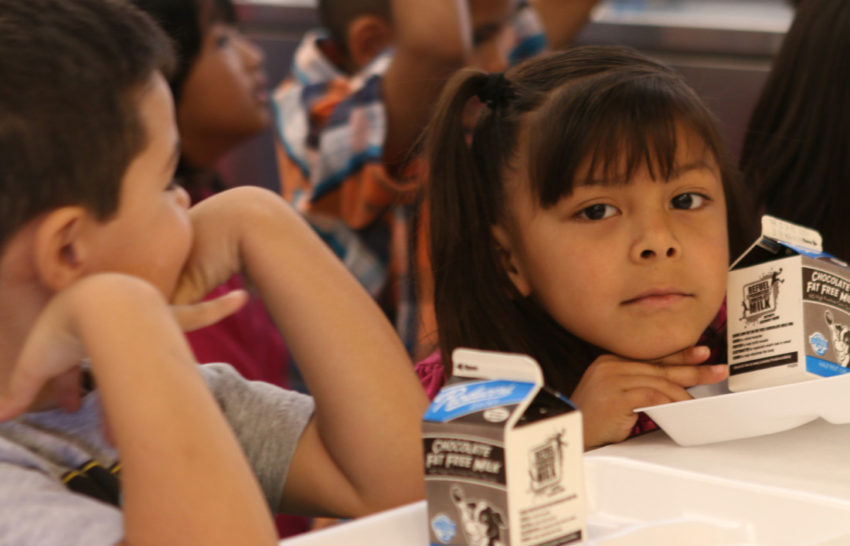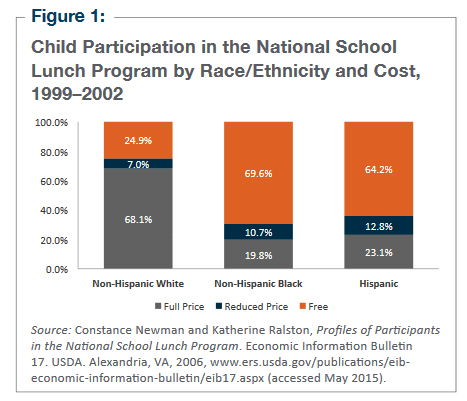
Share On Social!
The classic bully takes a kid’s lunch money.
But a new type of bully—”school lunch shaming,” when a student has no money for lunch to begin with—is on the upswing in schools across the country, CNN reports.
This type of “hidden” or “unintentional” bullying greatly affects Latino kids.
Latino kids comprise about 1 in 4 of the kids participating in the National School Lunch Program, according to the UnidosUS.
“It’s the working poor who get screwed,” Jill Duban, who heads up a program called Common Threads a school district that helps low-income and homeless families, told CNN. “The lunch ladies are not always nice about it.”
Brown bags of shame
Despite the large expansion of free and reduced lunch programs across the country, many kids simply cannot afford to pay $2.35 for lunch every day.
In many cases, children are unaware that they have no money left in their lunch accounts when they are in the lunch line.
What happens when a child can’t pay for their food?
In many schools, their tray of hot food is often taken away from them in the lunch line and they are handed a brown paper bag with a cold sandwich and small milk.
Some schools do not even offer this option and the child goes without essential food.
“It’s the worst part of the job. Nobody likes it,” said Matt Antignolo, director of food services at the Lamar Consolidated District, told CNN. “All of the other kids in the lunch line know what’s going on. Getting that brown bag is the lunch line equivalent of being branded with a ‘Scarlet Letter.’”
How bad is the problem?
About 76% of America’s school districts have kids with school lunch debt, CNN reports.
Poverty has increased the number of children fed through the National School Lunch Program has expanded dramatically in the last few decades.
In 2013, 21% of all U.S. kids were living in poverty compared with 15% in 2000, including 24% of Latino kids, according to the National Center for Education Statistics.
 Currently, 20 million young people – accounting for nearly 40% of all U.S. students – receive free lunches.
Currently, 20 million young people – accounting for nearly 40% of all U.S. students – receive free lunches.
This is up significantly from 13 million in 2000.
Latinos represent 24% of all children in the National School Lunch Program.
More than three-quarters of Latino kids get free (64.2%) or reduced-price (12.8%) lunch, according to National Council of La Raza.
But there could be more.
Latinos make up a large share of children who are likely eligible for free or low-cost school meals but not receiving them.
What are schools doing to help?
The U.S. Department of Agriculture, which oversees school meals, has required all districts have a policy regarding school lunch shaming in place in time for the start of the 2017-2018 school year.
Many major cities, including Chicago, Dallas and Philadelphia, have begun to offer “universal coverage” to all students when it comes to cafeteria meals.
This means all of their students can get free lunch – no one pays.
The goal is to reduce the shame and stigma associated free lunches and ensure all kids eat.
In April, thanks to a bill authored by State Senator Michael Padilla, New Mexico officially banned all forms of school lunch shaming in all of its public schools.
“It’s very obvious who the poor kids are in the school,” Padilla told NPR.
A family of four that earns under $31,400 can get free lunch for the kids; the current cutoff for free lunch is roughly $45,000 for a family of four.
Families also automatically qualify for free lunches if they are on food stamps or a child is in foster care. All families have to reapply every year for the aid.
“We provide all students with a free bus ride and free textbooks,” said Antignolo. “Why not provide them with a free meal while they’re in our care during the day?”
Explore More:
Mental HealthBy The Numbers
22
percent
of Latino youth have depressive symptoms, more than any other group besides Native American youth




I know this is a two year old article, but Bias is another reason why some Hispanic people think about or attempt suicide. I’m actually part Filipino, German and English and I ended up looking stereotypically Hispanic and my surname is Spanish due to my Filipino side since the Spanish colonized the Philippines. I’m a woman though and I’ve thought about it for a number of reasons involving my health from a rare disorder that caused learning issues and also I have obvious cancer symptoms Ive tried getting help with. I’ve also been treated poorly and sometimes in very scary situations because of obvious Bias and Prejudice due to my appearance. I’m just saying Bias against people who are Hispanic and “look Hispanic” is a real thing. I apologize if it was in this article but I didn’t notice it, But I do apologize if its in there. I just think it needs to be addressed more. Thank You